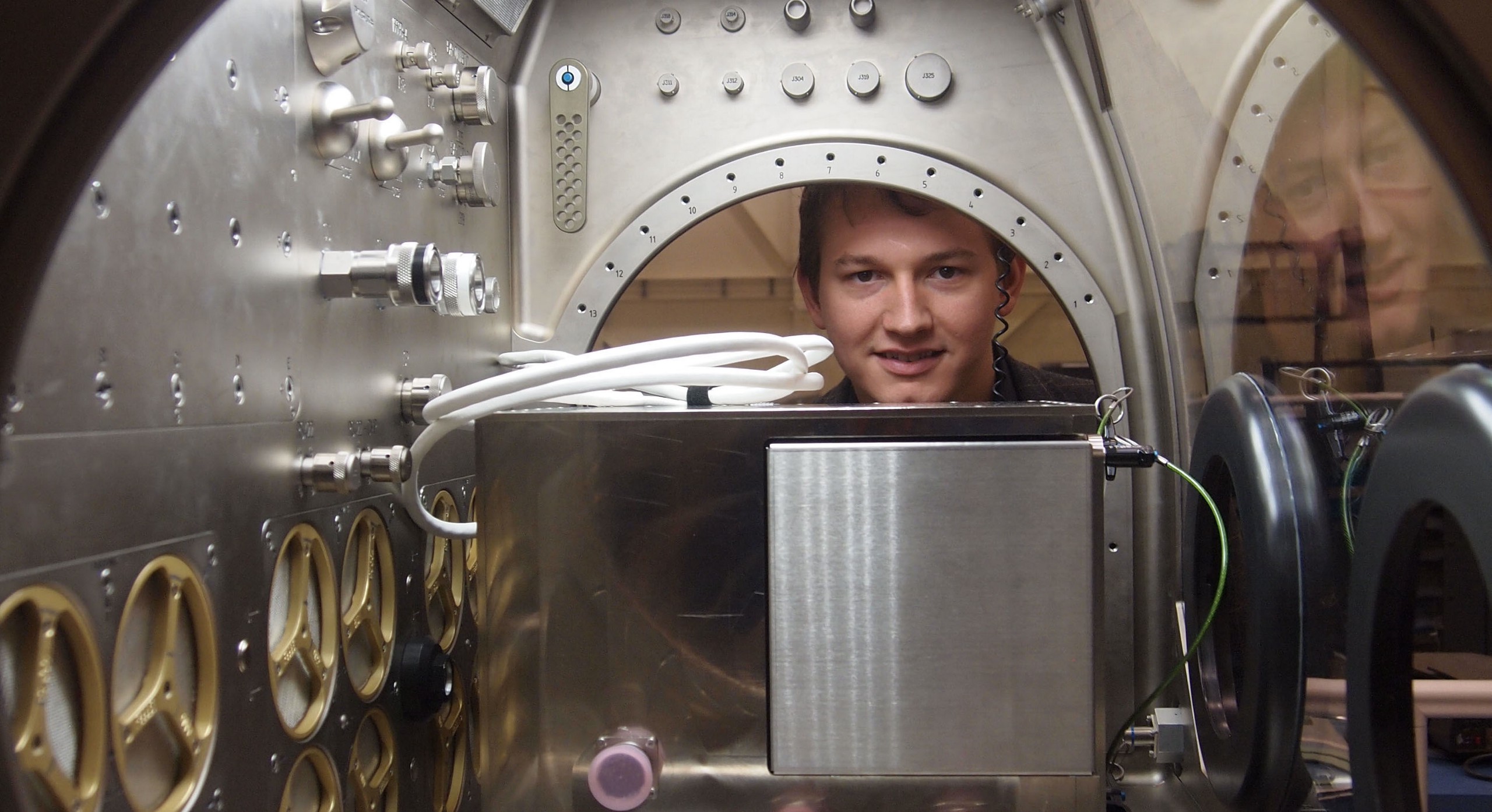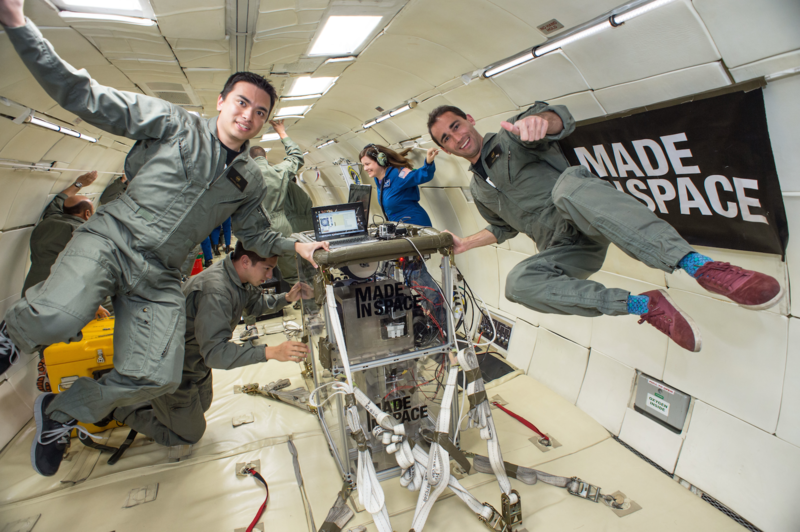

In space, skin gets itchy. The cabin gets dry, so skin does, too. Then it itches.
It was Commander Barry Wilmore up in the International Space Station (ISS) who recently brought this problem to the attention of NASA’s 3D-print project manager, Niki Werkheiser. Wilmore and his crew had just witnessed the first manufacturing of a tool in space–a little ratchet made layer by layer with heated plastic.
3D printers, both Earth- and space-based, build objects in three dimensions by heating a material (like plastic) and squirting it onto a base, layer by microscopic layer with remarkable precision. Designs drawn up in 3D-modeling computer software are fed to the printer, creating objects as simple as a ratchet, to those other finished products with multiple moving parts. If it can be designed on the computer, it can be printed.
An obvious idea for 3D printing in space is emergency spare parts. “The space station right now has over a billion dollars worth of spare parts on it that it will most likely never use,” said Brad Kohlenberg, the business development engineer at Made in Space. But those parts need to be there, just in case something critical gets lost.
“If I drop something, it falls on the floor. I know to look on the floor,” explained Werkheiser. “In space it can go anywhere “¦ there’s no up or down, so we have plenty of smaller parts that kind of go missing, and we have things that break.” Werkheiser shared an anecdote about an astronaut configuring an extraction tool out of a toothbrush. Clever, but not ideal. With a 3D printer, she could have called down to NASA and had a freshly printed part in no time.
One famous almost-disaster in space could have likewise been solved quickly with the help of 3D printing. The brilliant makeshift CO2 scrubber that the Apollo 13 trio used to clean the air it breathed could have been designed and printed with ease in a few hours, saving the ground crew days of unrest.

Made in Space’s printer doesn’t differ much from those heavy-duty models used on Earth. Its makers re-engineered a few parts to eliminate any reliance on gravity and refined the printer through multiple runs on the “Vomit Comet,” a parabolic flight NASA employs to prepare astronauts for the feeling of zero gravity.
The printing technology promises to help NASA prepare for its lofty goal of sending humans to Mars in the 2030s. Printing that ratchet in December 2014 proved it was possible to send a computer design from Earth and have it produced at the space station. In turn, its success prompted astronauts to start thinking about the array of objects they need onboard–spare parts, fixes, or items for which they usually radio down to command, only to wait months until the next rocket launch.
“And then we get a kind of amusing call down,” said Werkheiser. “It’s actually very meaningful “¦ [Commander Wilmore] said the first thing on his Christmas list was a 3D-printed back scratcher.” This simple tool of comfort might not make the original packing list among the thousands of pounds of cargo wrapped and packed safely for violent takeoff. But little things like a good back scratch can make a huge difference in the lives of our next-generation explorers.
A Martian orbit mission would take five years; a landing mission even longer. 3D-print technology has opened doors to a Mars expedition that could allow astronauts to not only explore but to live. “They will be in a confined space “¦ away from the family, away from everybody on Earth,” said Anjan Contractor, an engineer at Systems and Materials Research Corporation. “How can we provide them closeness to Earth? And that’s the challenge.”
Space travelers deal with cramped quarters. And with all the materials necessary for experiments and safety elements shielding them from the vacuum of space–all the systems keeping them alive–there is little room for knickknacks. “It’s really expensive to get to lift anything off of the Earth’s surface and put it into orbit,” said Kohlenberg. “This is a conservative estimate, but for every [pound] it takes about $10,000.” If it’s not necessary, it won’t launch.
Back scratchers, spare parts, and disaster-averting fixes aside, 3D printing could actually realistically enable a trip to Mars. Contractor and his colleagues first became involved in NASA’s Martian quest when the organization put out a call for proposals asking for new methods of producing food in space. Current food sources last for about 35 months, Contractor explained. “Just orbiting Mars and coming back takes five years. So food is a big problem.”
The dehydrated and deconstructed powdered food pods Contractor’s 3D printer uses could last decades. Anything that could spoil the food is removed, including oils and acids; what remains is powdered and each constituent is packaged separately. At mealtime, the parts are reintroduced, forming a paste that squeezes through the printing head onto a plate. Dinner is served.
They started with pizza, which Contractor said tasted just like pizza from your favorite parlor. The team then moved on to bread, cinnamon rolls, and even celery. The goal is to print an entire meal–yes, even a hunk of meat–with all the nutrients an astronaut requires to stay healthy, with the option of customizing each diet to an individual space traveler’s needs. The concept is not unlike the Star Trek Replicator, but in that case they made food from molecules of air.
“The control station on Earth can design or fine-tune their recipe to have more of certain micronutrients in their system, design a recipe order, and send it to the space station,” said Contractor. He pointed out that microgravity dulls tastebuds, meaning astronauts usually wish for spicier or more savory foods than they might prefer on Earth. Customizable food would allow them to amp up whatever spice they desire based on their changing palates. The whole idea makes spending five years in space a little less daunting.
Contractor, Werkheiser, and Kohlenberg hope that if and when humans land on Mars, 3D-printer technology will help them create a home. “It didn’t make sense for early pioneers to bring all of the timber with them to the new land so they could build their new structures,” said Kohlenberg. “They went to a new land, they cut down the trees, and they built with the trees that were there. So it makes sense to go to a planet, and rather than bringing “¦ tons and tons and tons of spare parts, or even reams and reams and reams of plastic, you can actually just use perhaps the regolith there on the planet and create some kind of a concrete with it.”
Made in Space is investigating other printable materials like metals and fully integrated electronics that perform best in outer space environments. Meanwhile, NASA is looking into ways to recycle the printed materials after they’ve been used or repurpose packing materials that keep parts safe during launch to utilize as printer feedstock.
“It’s a really, really exciting time to be alive,” said Kohlenberg, “and to be a part of this kind of step where humanity is “¦ no longer bound to the surface of the Earth in our imagination and our design.”


How We Get To Next was a magazine that explored the future of science, technology, and culture from 2014 to 2019. This article is part of our The Future of Food section, which covers new innovations changing everything from farming to cooking. Click the logo to read more.
